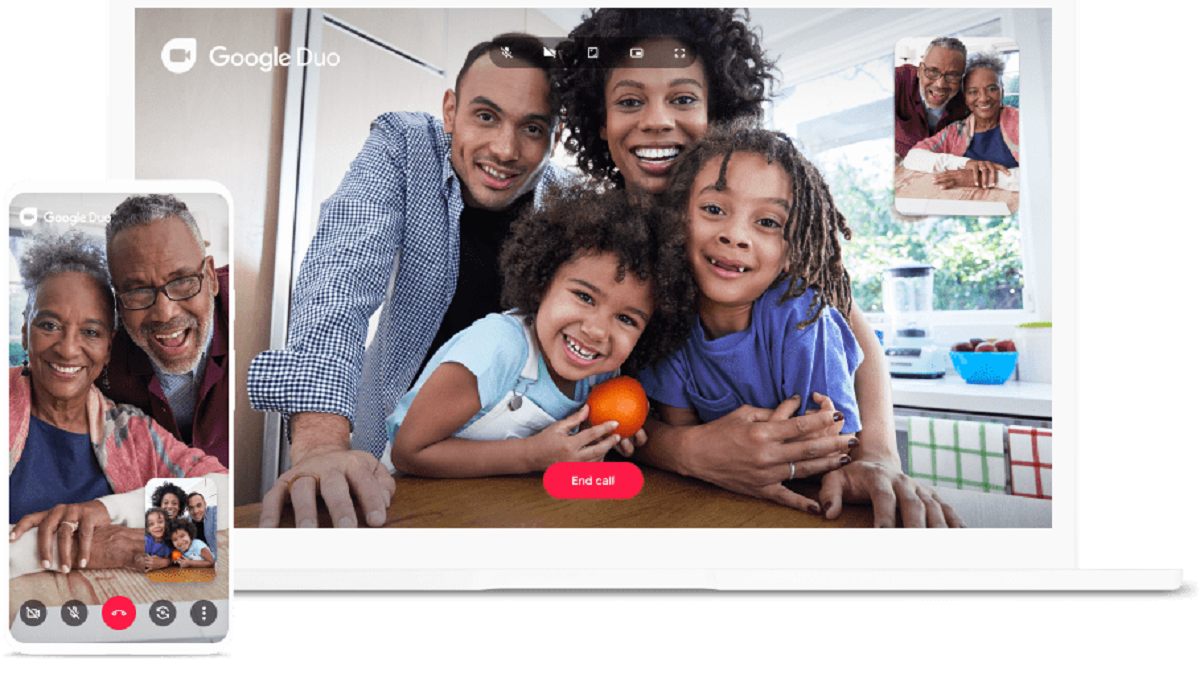
Google has perfected a new codec that can work well even on severely-constrained and bandwidth-starved networks. Essentially, the Lyra Codec promises to deliver reliable and lag-free video calls regardless of the quality of the connection.
In addition to pushing AV1 Codec’s adoption, Google is also deploying a new codec dubbed “Lyra”. The Google AI team has developed the new “high-quality, very low-bitrate speech codec.”
Google promises to offer video chats over any network with Google Duo and Lyra:
The majority of large U.S. carriers are promising blazing fast connections over the next-gen 5G networks. However, there are several limitations to the network, which can hinder smooth multimedia transmission.
Google Duo competes with popular videoconferencing apps such as Zoom, Microsoft Teams, and even WhatsApp. However, the platform will now have a powerful codec that can boost the reliability and quality of video calls.
Google’s New Lyra Audio Codec Will Improve Google Duo Video Quality Substantially https://t.co/s7ONovP2nX
— Top Most Popular News (@TPM_NEWS) March 2, 2021
The Google AI team has detailed its new high-quality, very low-bitrate speech codec in a blog post. Lyra uses a new high-quality audio generative model. It is not only able to extract critical parameters from speech but is also able to reconstruct speech using minimal amounts of data.
The new generative model that Lyra uses, builds upon Google’s previous work on WaveNetEQ. Google Duo currently uses this generative model-based packet-loss-concealment but is now getting Lyra.
Lyra audio codec enables high-quality voice calls at 3 kbps bitrate (https://t.co/gq9c5qZVL8) : https://t.co/1KDeytujnn
— 6LT Data (@6ltdata) March 2, 2021
Google claims it has trained Lyra “with thousands of hours of audio with speakers in over 70 languages using open-source audio libraries and then verifying the audio quality with expert and crowdsourced listeners”. The new codec is already rolling out in Google Duo to improve call quality on very low bandwidth connections.
Interestingly, even though Lyra is deployed in speech use cases, Google is exploring how to make it into a general-purpose audio codec. Simply put, the information and knowledge that Google gains from Google Duo’s use of Lyra should help the company deploy the codec elsewhere.
Benefits of using Google Duo with Lyra Codec:
Google Duo was one of the first platforms to offer high-definition video calling. The company offers Duo calling to all Gmail account holders as well as Android and iOS users.
Google claims the Lyra Codec is at par with state-of-the-art waveform codecs that many streaming and communication platforms use today. The primary benefit of using Google Duo with Lyra is that the platform doesn’t send over the signal sample-by-sample. This method requires a higher bitrate (and hence more data).
Google applies ML to design the Lyra low bitrate audio codec https://t.co/3orEXJNil4
— David Ross (@dave_ross) March 2, 2021
Google claims Lyra uses a “cheaper recurrent generative model” that works “at a lower rate”. However, it can still generate multiple signals at different frequency ranges in parallel.
The Google Duo platform combines these signals “into a single output signal at the desired sample rate.” The extensive before and after processing yields a processing latency of 90ms. Google claims such a delay is “in line with other traditional speech codecs.” The company also claims Lyra outperforms the royalty-free open-source Opus codec as well as other codecs like Speex, MELP, and AMR at very low-bitrates.


